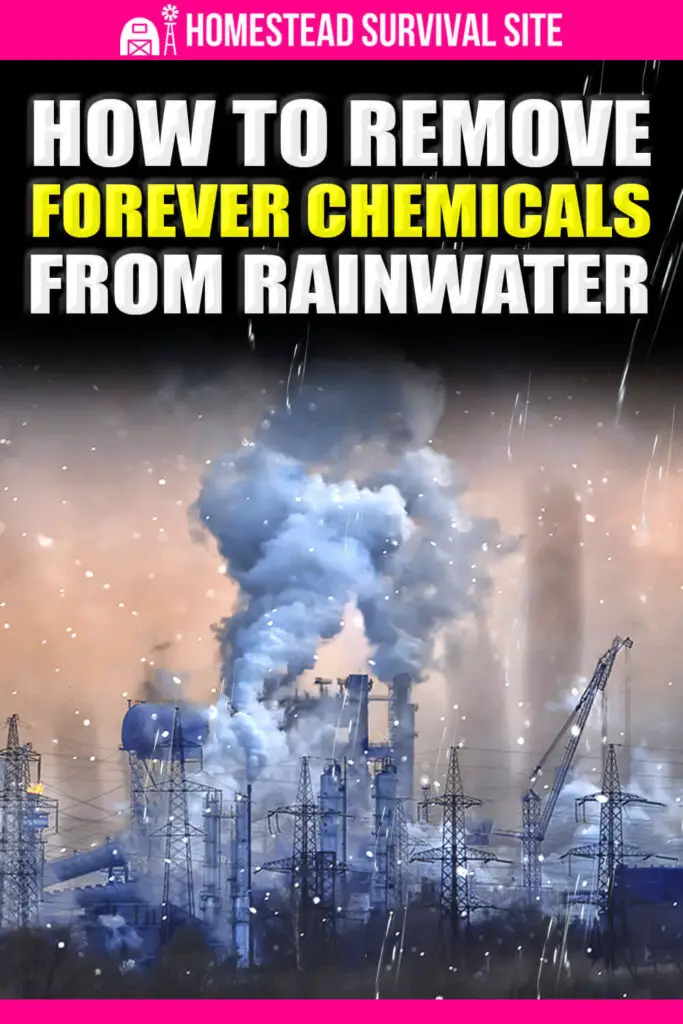Estimated reading time: 6 minutes
A new study found that rainwater is unsafe to drink no matter where you are on Earth. Researchers from Stockholm University and ETH Zurich University detected the presence of per- and polyfluoroalkyl substances (PFAS) — known as “forever chemicals” – in such far-flung places as the Tibetan Plateau and Antarctica.
According to the study published in the journal Environmental Science and Technology, these human-made chemicals, which contaminate soil and water sources, do not break down in the environment. Investigations are ongoing as to how they affect human health, with liver damage, heart disease, thyroid problems, fertility issues, and certain forms of cancer among the many possibilities.
Forever chemicals are a group of over 5,000 chemicals found in a wide range of industrial and household products, including non-stick cookware, plastic wrap, firefighting foam, and even dental floss, pizza boxes, and microwave popcorn.
Although scientists have known about the adverse effects of eating or inhaling these chemicals for decades, newer studies are raising the alarm about their presence in drinking water. For example, a 2020 study by the Environmental Working Group (EWG) concluded that exposure to PFAS from contaminated tap water had previously been “dramatically underestimated.”
In 2021, the EWG estimated that over 95 percent of the U.S. population had been exposed to PFAS. However, the U.S. government does not currently regulate these chemicals in the nation’s drinking water.
Although these findings are yet another source of gloom and doom about our planet, there is a glimmer of good news. There are recognized methods to filter out forever chemicals from drinking water. And you can perform them yourself.
The two most effective methods use granular activated carbon (GAC) filters – often called charcoal filters — and reverse osmosis (RO). To help you determine what method might be right for you, we have listed some important questions and answers on this topic.
Want to save this post for later? Click Here to Pin It On Pinterest!
What are GAC filters?
GAC filters are made of tiny, loose granules of carbon. They are highly effective at improving the taste and odor of drinking water and are part of many pitcher, refrigerator, and faucet-mounted filters. Some whole-house treatment systems use these filters as well.
Not all GAC filters are certified to remove PFAS. For those that are certified, the carbon acts as a magnet for PFAS, pulling them from the water into the filter.
What are RO filters?
In an RO filtration system, water is pushed through a semipermeable membrane. The tiny pores of the membrane block chemicals like PFAS from passing through.
RO residential systems are typically installed in the cabinet below a kitchen sink or sit on the kitchen countertop. RO systems require frequent cartridge changes and tend to use much more water than other systems. Ranging in price from $200 to $2,000, RO systems may require a professional plumber for installation.
How can I know if a filter works on PFAS?
Most popular water pitcher brands (such Brita and Pur) reduce chlorine and other contaminants like heavy metals in drinking water. But they were not designed to remove PFAS.
Your best bet is to check the National Sanitation Foundation’s list of certified filters and the contaminants they remove. Fewer than 100 filtration products are certified by the National Sanitation Foundation at this time. Also, some if these filters only reduce the PFAS, not remove them entirely.
Many of these filters do not have to be installed under your sink, but they do have to connect with a filtration system that sits on the counter and plugs into an electric outlet.
How can I test my home’s water for PFAS?
If you are on a municipal water system, check to see if your water is already being tested and ask for the results.
If your water has not been tested or if you have a well, you can purchase a test from one of the dozen or so U.S. labs that sell PFAS tests for home use. However, it’s not cheap. Prices often range from $500 to $1,000 per sample.
And you will need to follow precise guidelines for collecting your sample to prevent cross-contamination from other items in your house. PFAS can be in many different areas of your home, on your clothing, and even in dust particles.
For example, you’ll need to wear heavy-duty nitrile gloves and take care not to touch anything other than the bottles during the collection. Here is a list of home sampling guidance from the state of Michigan.
What works better – GAC or RO?
A 2020 joint study by Duke University and North Carolina State University found that GAC filters varied widely in filtering PFAS, while installed RO systems did a more consistent job.
“We saw clear trends among different PFAS and how well they’re removed in the activated carbon, but the reverse osmosis did great,” said the study’s lead investigator Heather Stapleton, a professor at Duke University, in an interview with Discover Magazine. “So, we are typically recommending reverse osmosis if it’s a feasible option because we recognize that it’s expensive.”
The researchers stressed that regular maintenance is critical no matter what type of water filtration system you use. Their study fact sheet recommends carefully following the manufacturers’ filter replacement schedule.
“What I always try to say is, just use a filter,” said Stapleton. “Because any filter is better than no filter, even if it’s not 100 percent effective.”
What about larger-scale ways to get rid of PFAS?
As research confirms how pervasive the problem of PFAS is, more studies are underway for breaking down these chemicals. And there is some promising news.
Heat is a crucial factor. A study recently published in the Journal of Environmental Engineering revealed that a heat- and pressure-based technique called supercritical water oxidation destroyed 99 percent of the PFAS in a water sample.
In another study, UCLA and Northwestern University scientists developed a way to break down forever chemicals at relatively low temperatures. In an August 2022 paper published in the journal Science, the researchers found that when water was mixed with two inexpensive compounds at a low boil, PFAS molecules fell apart in just a few hours.
However, Northwestern’s William Dichtel, co-author of the study, told the New York Times that much more work is needed to make this process work outside the laboratory.
“We’ve really polluted the whole world with this stuff,” Dichtel said.
If you’d like to learn more about PFAS and how to protect yourself and your family from them, here are a few print and online resources:
- The Forever Chemical by James Daniel
- Forever Chemicals by David M. Kempisty and LeeAnn Racz (editors)
- PFAS (webinar led by Endocrine Society and Environmental Working Group scientists)
- PFAS Explained
- What are PFAS chemicals?
- PFAS – the ‘Forever Chemicals’
Like this post? Don't Forget to Pin It On Pinterest!
You May Also Like:












I think a GAC filter is better, not so much for their efficiency or effectiveness but for their continuation to work even without power. RO wil not function without electricity unless you have it wire up to your solar panels.